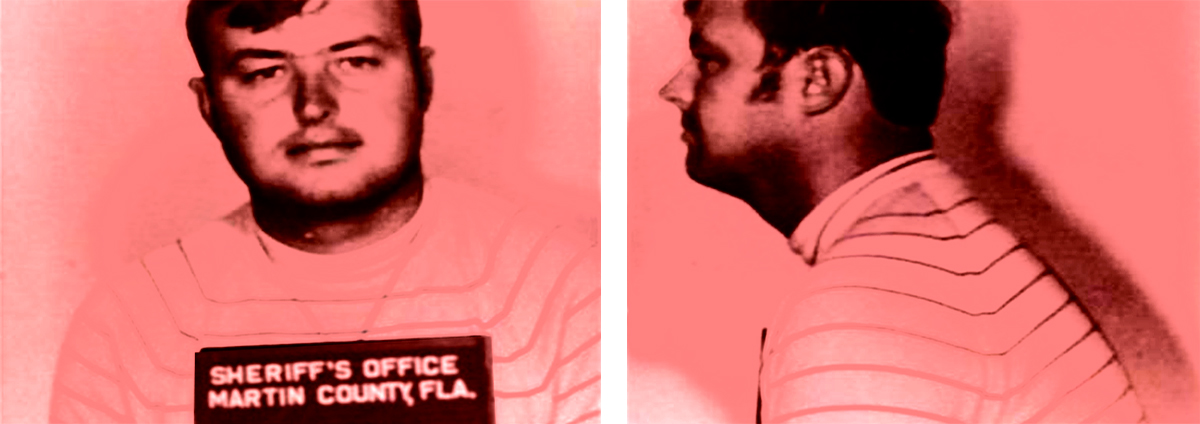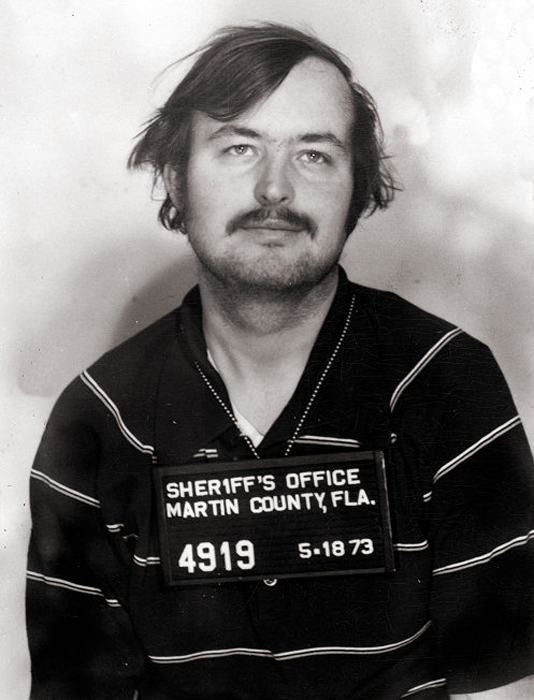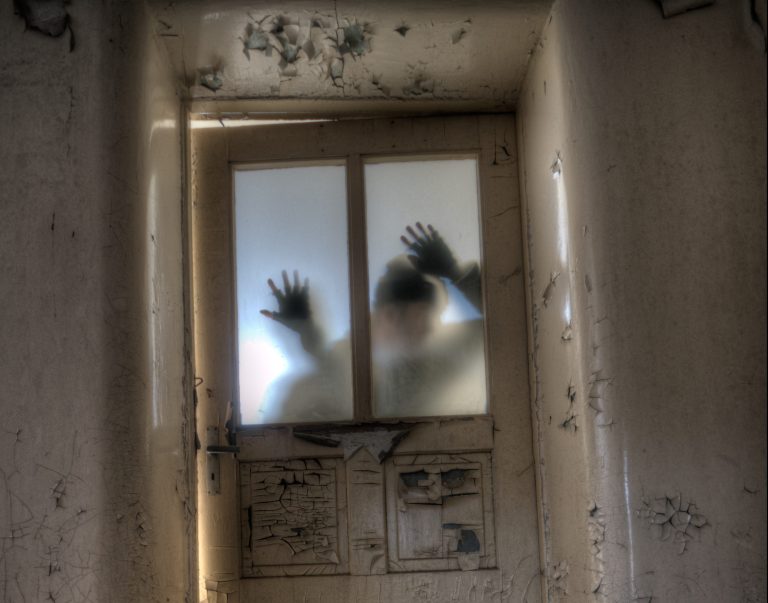Gerard John Schaefer: A Serial Killer Who Wrote ‘Killer Fiction’
Gerard John "GJ" Schaefer's wrote horrifying true-crime fiction—and his "fictional" writing helped convict him of murder. He was convicted of two murders, suspected by authorities of more than two dozen, and frequently boasted that his death toll was higher than eighty—all of them women.
By ![]() Jim Goad
Jim Goad

True-crime writing usually sucks because its authors are normally voyeurs rather than criminals. Since most of them have never done anything more nefarious than run an occasional red light, their writing suffers from an implicit lack of authenticity. At a safe distance from their dangerous subject matter, true-crime authors are mostly poseurs because they’ve never committed a true crime.
The main problem with criminals, at least as it applies to true-crime writing, is that they are typically too compulsive and uneducated to lend an articulate voice to their crimes.
In the now-dead body of G. J. Schaefer, the worlds of “true crime” and “true criminal” collided, with exasperatingly mixed results. Although he masqueraded his nauseatingly graphic murder tales as fiction, it can fairly be termed “true crime” because Schaefer was suffocatingly close to his subject matter. He was convicted of two murders, suspected by authorities of more than two dozen, and frequently boasted that his death toll was higher than eighty—all of them women.
The most intriguing fact about this otherwise repellent man is that his “killer fiction” helped convict him of murder. The state used his writing as part of their argument for why he should be declared a true criminal. Although prosecutors never claimed that Schaefer’s real-life murders exactly matched those in his fictionalized stories, his unbearably ugly prose was introduced as evidence of a guilty mind.
Sifting through vomit-inducing accounts such as “Flies in Her Eyes,” “Whores—What to DO About Them,” and “Blonde on a Stick,” it will forever remain murky which murders he was describing and how liberally he toyed with the facts. But poking through the oily verbal darkness of his published books Killer Fiction and Beyond Killer Fiction, one gets the queasy feeling that this is the real shit—the true crime—no matter how much the names and places have been changed.
In 1963, Schaefer first studied the art of fiction in a Florida high-school creative-writing class. In college he told his writing professor, semi-famous Southern novelist Harry Crews, that he was tortured by murder fantasies. Crews referred Schaefer to a counselor. “[I] would like to kill things,” Schaefer confessed to the therapist. “I even like to shoot at cows now.” He also claimed that he beheaded animals with machetes before sodomizing them.
Ironically, the odious nutbar eventually landed a job as a Florida policeman. He was still working as a cop when he was arrested in 1973 for the murder of two teenaged girls whom he’d tied to a tree, shot through the mouth, and hacked to death. When police searched Schaefer’s mother’s house, they discovered three boxes containing the crude scatological murder narratives which were eventually presented to a jury as evidence of a serial killer’s mind. Tallying up the murder count in Schaefer’s stories, police fed local media the notion that he was perhaps responsible for more than thirty murders, leading to lurid headlines such as, “6 Dead; 28 May Be.”
During their search, police also found personal mementos, a gold tooth, an address book, and clothing belonging to other confirmed murder victims and missing women. Although Schaefer would never be tried for these crimes, such discoveries fed more speculative hyperbole: In May, 1973, Schaefer’s prosecutor alleged that the balding ex-cop and part-time fiction writer might be responsible for “the greatest crime in the history of the United States.” A year later, True Detective magazine dubbed Schaefer “The Greatest Mass Murderer of Women This Century.” In a 1997 reprint of Killer Fiction, British criminologist Colin Wilson writes, “Gerard John Schaefer was undoubtedly one of the nastiest serial killers of the twentieth century…Schaefer suffers from a kind of halitosis of the soul, and the stench quickly induces disgust.”
“I am probably at least one of the top SKs [serial killers] of this century,” Schaefer bragged in his jailhouse letters to ex-girlfriend Sondra London. “[I am] certainly one of the most interesting and maybe the most articulate and introspective. I am no doubt the most skillful killer….I killed women in all ways from shooting, strangling, stabbing, [and] beheading to odd ways such as drowning, smothering and crucifixion. One I whipped to death with a strap, another I beat to jelly with a baseball bat while she was hanging by her wrists….One whore drowned in her own vomit while watching me disembowel her girlfriend….I’ve crucified women, watched the flies work on living cuntflesh, [and] seen gagged women strangle to death on their own vomitus. I’ve skinned women….I enjoyed each and every experience.”
Yet despite such revolting braggadocio, Schaefer was as adept in the arts of duplicity and contradiction as he claimed to be in the gentle science of serial murder. Although he had sent the above boasts to Sondra London via US Mail, when she dared allege to a reporter that he was a serial killer, Schaefer threatened legal action and violence against her. “I’ve never killed anyone, period,” he scolded her.
https://www.youtube.com/watch?v=cX4O02TD6TQ
Such howling discrepancies typified Schaefer’s statements about himself after his arrest. In his diseased mind, it was simultaneously possible to have killed more than eighty women and to have killed nobody…
…to be a captain in the Dixie Mafia who can “scare the living shit out of you” at the same time he was a born-again Christian who believed God allowed him to be framed for murder so that he could deliver a “lifesaving message” in his writings…
…to be a red-blooded, non-deviant, hetero American male who just happened to have a taste for wearing women’s panties and who ran a bizarre mail-order “sex-slave” ring from prison posing as a woman who wrote customers things such as, “Write me your best effort on how you’d make love to my cunt.”…
…to be a self-proclaimed stand-up convict with a long history of snitching on other inmates…
…and to claim that his short stories were entirely fiction while insisting they were not fiction at all.
A life sentence for slaying the two teenaged girls would keep Schaefer in prison until late 1995, when he was fatally stabbed 42 times by another inmate during an argument revolving around a hot-water dispenser. During the incident, Schaefer’s assailant reportedly screamed, “You ain’t gonna need no hot water in HELL, motherfucker!”
The vicious cellblock assault speared the life out of the man born Gerard John Schaefer, Jr., nearly fifty years earlier. The oldest of three children, Schaefer felt that his father was hypercritical and preferred his sister Sara. “I wanted to die,” Schaefer later told a headshrinker. “I couldn’t please my father, so in playing games, I always got killed.”
Schaefer also revealed that his dad’s favoritism made him wish he’d been born a girl. His panty fetish emerged around age twelve, followed shortly by masturbatory acts of self-bondage where he’d tie himself to a tree and hurt himself in various ways. His will to harm gradually shifted into fantasies about torturing others, “women in particular.”

Schaefer’s burgeoning misogyny was fueled by his family’s harsh version of Catholicism, a religion not known for fostering sex-positive attitudes. Catholicism is distinguished from almost all other Christian sects by its fixation on Mary, its emphasis on the implausible fable of a virgin who gave birth, its devotion to a spotless anti-slut whose hymen was pierced only upon delivering her divine love child.
For Schaefer, those foolhardy women who chose to stray from the Virgin Mother’s sex-hating, non-lubricating ways were classified as “whores” and tagged for retribution. A woman need not sell her body to be classified as a whore; she merely had to entertain the notion that her vagina could possibly be used for something other than popping out babies.
“Whores were agents of evil, and as a good Catholic young man I had no difficulty with what one might consider philosophical grey areas,” he wrote. “There was good and evil; a well-defined line ran between the two. Whores were evil. Whores were to be killed….I was not a sex killer. I was a destroyer of evil. A paladin…my rage came up when females whored so the murderous act came from moral outrage rather than sexual interest.”
What never seems to occur to these whore-killers is that slaughtering someone might possibly rank as more “evil” than, oh, enjoying sex or occasionally flashing your boobs. Such is the perpetual idiocy of self-righteous malice.
And despite Schaefer’s repeated (and largely unsolicited) jailhouse protestations that he was sexually well-adjusted, his short story “False Confessions” implies that he murdered at least seven girls before ever engaging in traditional intercourse. The story also alleges that his first slaying was accidental, the result of “fooling around” with a rope, a girl, and her neck.
“I think Schaefer was a sexual psychopath,” says Dave Kelly, a Florida detective who grilled Schaefer extensively about his crimes during the mid-1980s. “I strongly believe Schaefer was responsible for a lot more crimes than he was confined for. 1968 is the date of the first crime they attribute to him, but I believe he probably started his activities in his early teen years—probably 12 to 14—and I’m talking murder, not just his sexual activities.”
According to Schaefer, his first “normal” relationship started at age 14 with a girl named Cindy. She was a piece o’ work, refusing to have intercourse in the smooth, tender manner of most young lovers. Instead, she’d insist that Schaefer rip off her clothes while she pretended to resist. She wouldn’t fuck him unless they play-acted that it was rape—which, when you think about it, takes all the “rape” right out of it.
Schaefer claims that he tired of playing the rape games after three years, causing a petulant Cindy to terminate the relationship. The day of their breakup, he wandered into the woods and resumed tying himself to trees.
At a high-school dance in 1964, he met Sandy Steward, who would describe him as a “dazzling young stranger” and “a sensitive and enthusiastic lover.”
“I never saw him kill anything but squirrels, birds and fish,” Steward would write years later under the name Sondra London. “I can still see him holding up his hands for my grandmother to wind her knitting yarn, patiently listening to her long, rambling tales and laughing easily at her corny jokes. My aunts adored him, commenting openly on how pleasant and polite he was. Even my demanding father approved of him.”
The relationship soured over the course of a year as Schaefer grew more comfortable sharing his homicidal fantasies with London. He spoke of his urge to slay Leigh Hainline, a girl who lived two doors down from his house and allegedly had a habit of changing her clothes without drawing the shades. Boiling with anger, Schaefer dubbed her a “slut” and swore that he’d “put a stop” to her exhibitionism.
Leigh Hainline disappeared in 1969. When police searched Schaefer’s mother’s house after his 1973 arrest, they found several items of her jewelry, including a locket engraved “Leigh.”
Alarmed by Schaefer’s disturbing self-revelations, London dumped him in 1965. Imagine her mix of horror and relief when she read the 1973 newspaper headlines implying that her “dazzling young stranger” might be responsible for three dozen murders.
In 1989 she finally wrote her former lover in prison, suggesting that he compile his short stories into a book. Schaefer eagerly agreed, describing her as a “former great love of my life.” London eventually published Killer Fiction and Beyond Killer Fiction. The first volume contains some of the stories police seized during their 1973 raid of Schaefer’s mother’s house. Though neither tome was a best-seller, they stand alone as true-crime oddities—“fiction” written by an author who probably committed the crimes described therein.
For London, Schaefer proved to be a literary prima donna and all-around creepy pain in the ass. He blamed his killing spree on her 1965 abandonment of him. He unsuccessfully tried to sue her and have her arrested. He threatened to send some of his criminal associates to sexually assault her daughter.
London secured a protective order against Schaefer and once again abandoned him, this time for good. “To enter chez Schaefer,” she would write, “was to wander through the Byzantine lair of a terminal malignancy in human form.”




